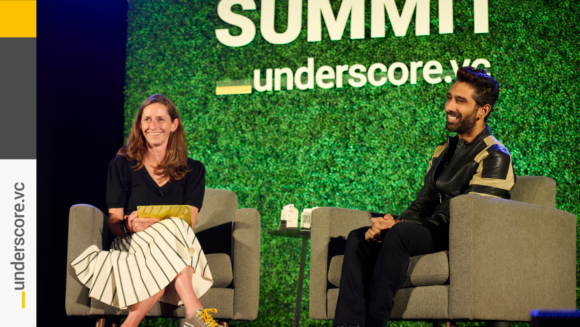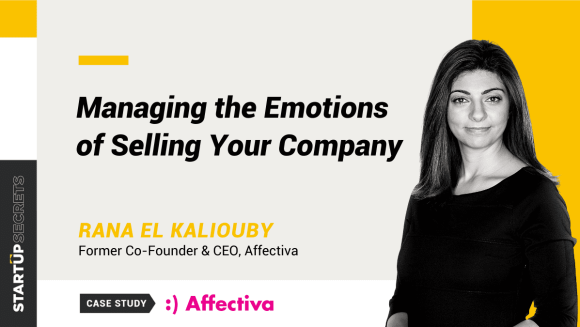Vision and execution are vital in building an enduring company. So how do you balance them in the formulation of your startup and benefit in the process?
Here’s the challenge: On the one hand, entrepreneurs are expected to be very crisp about what problem they are solving “here and now” in a very real form. And on the other hand, investors want to hear the vision of how that can lead to building a company and not just a feature or a product.
In this video, Underscore VC investor Sooah Cho shares some more context.
An entrepreneur’s ability to articulate a vision for how they can grow their idea into a big business is often an essential part of the funding process. The balance is vital, too, as too much of one or the other can leave either a sense of nearsightedness or of the entrepreneur not being grounded in reality.
After seeing thousands of startup business pitches, we’ve learned that there are some straightforward things that can help entrepreneurs to tackle this balance.
It starts with clearly articulating and separating three key elements: Value Proposition, Vision, and the Roadmap between them.
1. Value Proposition
Articulate your value proposition in as current and focused a form as possible. Explain what you have already proven to be working, or share what you are focused on proving now. And define your initial target segment as narrowly as possible so as to get as tight as possible a product-market fit.
With that backdrop, be prepared to share how you plan to iterate on your value prop to develop it toward a bigger product or company. But draw a distinct line when you are moving on to talk about your future vision.
Startup Secret: It’s easier to build on success (of an initial, focused value proposition) than it is to cut back on failure (of an overly broad vision).
2. Vision
Try to articulate your vision from a customer perspective and define what you see as the future market opportunity. Break down as best you can how you see the market developing, not just how big it is.
Talk about relevant and supporting uber trends and how they have shaped your thinking. And share how you developed any convictions you may have on what opportunities these trends will open up for you to evolve your products & services. Humility is more appropriate than hubris as we all know that a lot will need to be learned from customers, partners, and other players in the ecosystem who will help you realize how to execute.
3. Roadmap
Your startup roadmap bridges your value proposition and vision. It shows how you plan to address the evolving needs of the market as you’ve just described. Put as many tangible steps and milestones as you can envision how you will lead that market. Any investor will know that you don’t have a crystal ball and that it’s highly unlikely that things will play out this way. Good investors will look to see how you are thinking and learn if they can get behind you and your vision as a partner to help you plan and fund you appropriately for that journey.
All this is not just useful for investors. After all, each of your team will need to be able to clearly understand what business you are trying to build. So when your team makes the thousands of decisions that will be below the radar, they are guided by the compass of your clear vision and inspired by your mission.
Basic things like who to hire and what to build versus partner for in your product will be more easily evaluated against a clear roadmap to keep everyone pulling together toward common goals. This will make your team more effective and efficient. Think of your vision and mission as threading each decision and resource together so that they ultimately bound into a single rope that all stakeholders can pull on with confidence.
There’s No Substitute for Execution
When it comes time to execute, the most important thing is focus. Focus specifically on what you can do uniquely well and say no to all the distractions that look like opportunities. Instead, keep focused on further breaking down those milestones as clear goals, SMART (Specific, Measurable, Achievable, Resourced, Time-based) objectives and manageable actions with your team.
Then as a manager, figure out how to forecast, plan, organize, coordinate, and communicate so your team is set up for success. If you have a great value proposition, are going after a market-led vision, hire the right people and execute in this way, you can earn your success.
In conclusion, you can balance vision and execution. Just remember to delineate clearly between your focused execution today and your vision for where that can take you. And always show pragmatism in thinking out and presenting the steps in between as a roadmap to evaluate your progress.
Food for Thought
Market leaders are usually disproportionately highly valued versus number two or three in a category. And they do just that–they “lead” the market. Think about that. It means that they have a vision beyond where the market is today. How will you provide that?
Listen and lead. That is to say, few customers are visionaries, but if you seek out and listen to enough of them and to market needs you can gain the critical insights to take a visionary stance. This will enable you to get ahead of their thinking and lead a market.
Visionary and early adopter customers want to follow new leaders. They specifically want to gain a competitive advantage from them. And while you can only make money from your currently deliverable value prop, your vision and roadmap will help customers see your potential for leadership.
They also know that large legacy players cannot be as responsive to their needs as a nimble startup. So the pace of your roadmap will excite them. Even if it’s in small increments, just be sure to consistently deliver rather than promise so your roadmap gains credibility. Again, that’s the balance of vision vs execution.
Eight-year overnight successes. The average period from investment to the exit of venture-backed companies during the last decade was around eight years! Even ignoring exit, it usually takes several years to build a sustainable business or an independent public company. Given that long lead time, investors need to hear your vision of how the market will evolve and what will leadership look like.












